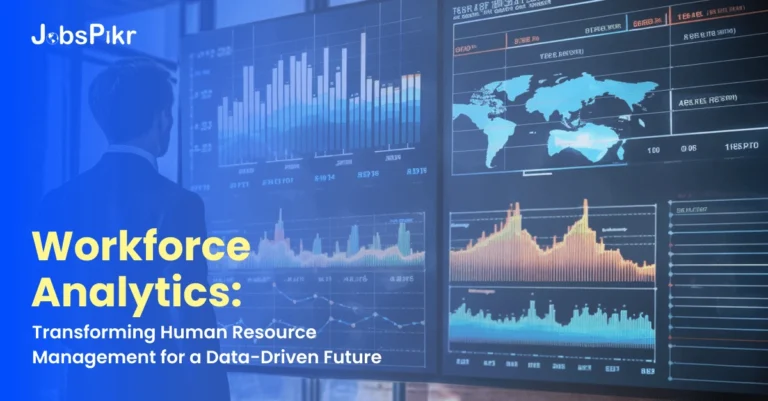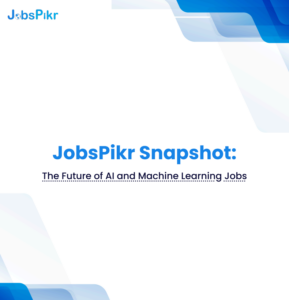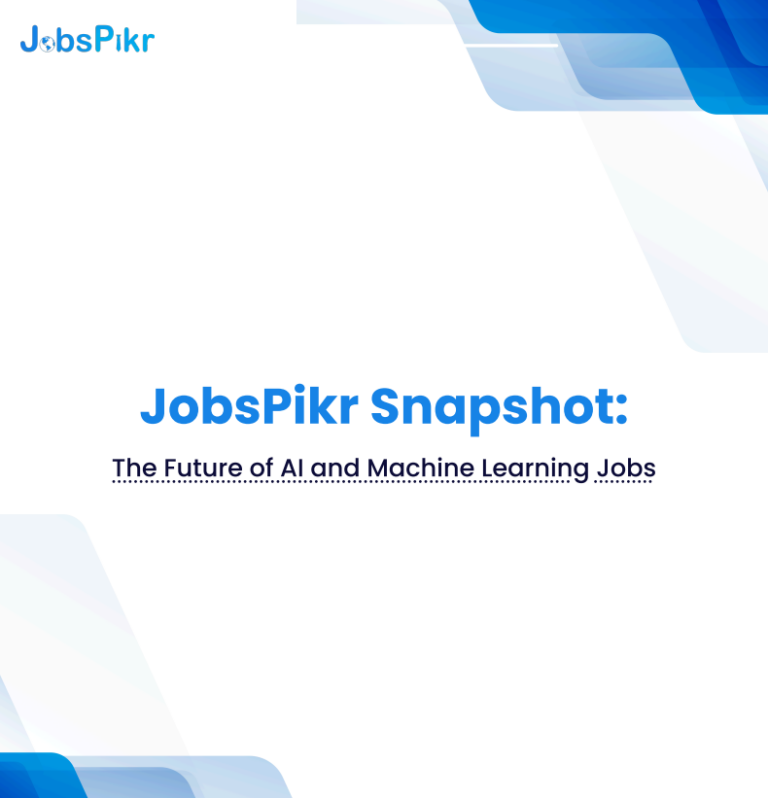Executive Summary
Workforce analytics is rapidly becoming an essential tool for organizations aiming to optimize their human resource management and gain a competitive advantage. This report provides an in-depth analysis of the workforce analytics market, exploring its current state, growth projections, and the challenges faced by different industries. By leveraging data to make informed decisions, businesses can improve their hiring processes, enhance productivity, and drive strategic growth.
Market Overview
The graph below illustrates the projected growth of the global workforce analytics market from 2023 to 2032:
Global Workforce Analytics Market Size (2023-2032)

The global workforce analytics market was valued at USD 1.81 billion in 2023 and is projected to reach USD 6.04 billion by 2032, growing at a compound annual growth rate (CAGR) of 14.3% from 2024 to 2032. This growth is driven by the integration of advanced technologies such as artificial intelligence (AI) and machine learning (ML), the shift towards cloud-based solutions, and the increasing demand for data-driven decision-making.
Regional Insights
The workforce analytics market is witnessing varied growth patterns across different regions, each characterized by unique drivers and market conditions.
– North America: Dominates the workforce analytics market with a 40.5% share in 2023, attributed to technological advancements and the presence of major analytics solution providers.
– Europe: Holds the second-largest market share, focusing on reducing labor costs and improving operational efficiencies through digital technologies.
– Asia-Pacific: Expected to experience the fastest growth due to the increasing adoption of advanced technologies and supportive governmental policies.
Industry-Specific Trends
The workforce analytics market is evolving, with distinct trends emerging across various industries. In healthcare, analytics is revolutionizing patient care and operational efficiency by enabling data-driven decision-making. The Information Technology (IT) and Telecommunications sector is leveraging analytics to optimize workforce management and enhance productivity. The Banking, Financial Services, and Insurance (BFSI) industry is utilizing analytics to improve risk management, compliance, and customer service. Meanwhile, the manufacturing industry is adopting analytics to streamline production processes and enhance supply chain efficiency. In retail, analytics is transforming customer experience and inventory management. This section delves into these industry-specific trends, examining how analytics is reshaping workforce dynamics and driving growth in each sector.
Healthcare
– Predictive Staffing and Workforce Management: Healthcare providers increasingly rely on predictive analytics to anticipate patient influxes and optimize staff schedules. By 2032, hospitals and clinics are expected to have fully integrated systems that provide real-time adjustments to staffing levels, improving patient care and reducing wait times.
– Skills Development and Gap Analysis: Workforce analytics helps identify skill gaps and areas for improvement, enabling targeted training programs. This ensures healthcare professionals maintain high levels of competence and readiness to handle diverse patient needs.
– Employee Well-being and Retention: By analyzing employee engagement metrics, healthcare organizations can implement strategies to improve work-life balance and reduce burnout. This leads to higher retention rates and better overall job satisfaction.
Information Technology (IT) and Telecommunications
– Remote Work Optimization: The IT sector continues to adapt to remote work environments by leveraging workforce analytics to track productivity, manage team dynamics, and enhance collaboration. Predictive models help identify patterns in remote work performance, allowing managers to optimize workflows and communication.
– Talent Acquisition and Skill Management: Workforce analytics plays a crucial role in recruiting top talent and managing skill development. By analyzing data from recruitment processes, companies can identify effective hiring channels and predict candidate success.
– Diversity and Inclusion Initiatives: IT firms use analytics to monitor diversity metrics and assess the impact of inclusion programs. This fosters a more inclusive workplace culture and ensures compliance with diversity goals.
Banking, Financial Services, and Insurance (BFSI)
– Fraud Detection and Compliance Management: Workforce analytics is essential for identifying fraudulent activities and ensuring regulatory compliance. By analyzing employee transactions and behaviors, BFSI firms can detect anomalies and implement preventative measures.
– Performance and Productivity Analytics: BFSI companies use analytics to assess employee performance and design incentive programs that drive productivity. This helps optimize team structures and align workforce capabilities with strategic objectives.
– Customer Service Enhancement: By analyzing customer interaction data, BFSI organizations can improve service delivery and enhance customer satisfaction. This leads to higher retention rates and stronger customer relationships.
Manufacturing
– Smart Factory Integration: The integration of workforce analytics with IoT and smart factory technologies allows manufacturers to optimize production lines and workforce deployment. This reduces downtime and increases operational efficiency.
– Safety and Risk Management: Workforce analytics is used to monitor safety protocols in real-time, ensuring compliance and reducing the risk of workplace incidents. Predictive models help identify potential hazards and improve overall safety.
– Sustainability and Efficiency: Manufacturers leverage analytics to optimize resource utilization and achieve sustainability goals. This involves reducing waste and improving production processes to minimize environmental impact.
Retail
– Omnichannel Workforce Management: Retailers use workforce analytics to integrate physical and digital store operations, optimizing staff deployment to enhance customer experiences across all channels.
– Dynamic Pricing and Inventory Management: Analytics tools enable retailers to predict demand trends and adjust pricing strategies in real-time. This ensures optimal inventory levels and reduces the risk of stockouts or overstock situations.
– Customer Experience and Loyalty Programs: Retailers analyze customer behavior data to develop workforce strategies that prioritize customer satisfaction and loyalty. This leads to improved sales and stronger brand loyalty.
Key Drivers of Growth
1. Integration of AI and Machine Learning
– Enhanced Decision-Making: The integration of AI and ML in workforce analytics provides organizations with deeper insights into employee performance and organizational dynamics. These technologies enable predictive analytics, allowing businesses to forecast trends and make informed decisions.
– Automation of Routine Tasks: AI-driven analytics solutions automate repetitive HR tasks, such as data entry and reporting, freeing up human resources for more strategic activities. This increases efficiency and reduces operational costs.
– Personalization and Customization: AI and ML enable the customization of workforce management strategies to individual employee needs. This personalization improves employee engagement and enhances the overall work environment.
2. Cloud-Based Solutions
– Scalability and Flexibility: Cloud-based workforce analytics solutions offer organizations the ability to scale operations according to demand. This flexibility is particularly beneficial for small and medium-sized enterprises (SMEs) that require adaptable solutions to meet changing business needs.
– Cost-Effectiveness: The shift to cloud-based analytics reduces the need for expensive on-premises infrastructure, lowering the total cost of ownership. Organizations can access advanced analytics capabilities without significant upfront investments.
– Real-Time Data Access: Cloud solutions provide real-time access to workforce data, enabling timely decision-making and enhancing the ability to respond to market changes and internal dynamics.
3. Demand for Data-Driven Decision Making
– Operational Efficiency: Organizations increasingly rely on data-driven insights to optimize workforce management processes and improve operational efficiency. Analytics provides actionable insights that help streamline operations and reduce costs.
– Competitive Advantage: Companies that effectively leverage workforce analytics gain a competitive edge by making strategic decisions based on data-driven insights. This positions them to adapt quickly to market changes and customer demands.
– Enhanced Employee Engagement: Data-driven decision-making empowers organizations to create more engaging and rewarding work environments. By understanding employee needs and preferences, companies can design initiatives that boost morale and productivity.
Adoption Trend Graph
Let’s visualize the projected adoption rates of workforce analytics across various industries from 2023 to 2032:
The graph above illustrates the projected adoption rates of workforce analytics across various industries from 2023 to 2032. Here’s a summary of the trends observed:
– Healthcare: The adoption of workforce analytics in the healthcare industry is expected to grow significantly, reaching about 83% by 2032. This growth is driven by the need for predictive staffing and skill gap analysis to improve patient care and operational efficiency.
– Information Technology (IT) and Telecommunications: With a strong focus on talent acquisition and remote work optimization, the IT sector shows the highest adoption rate, projected to reach 93% by 2032. The use of analytics for performance tracking and diversity management is also contributing to this trend.
– Banking, Financial Services, and Insurance (BFSI): The BFSI sector is leveraging analytics for fraud detection, compliance, and customer service optimization, with adoption rates expected to rise to 89% by 2032.
– Manufacturing: Workforce analytics adoption in manufacturing is anticipated to grow steadily, reaching 82% by 2032. Key applications include production efficiency, safety management, and predictive maintenance.
– Retail: Retailers are increasingly using analytics for customer experience enhancement and inventory management, with adoption rates projected
Conclusion
Workforce analytics is transforming the landscape of human resource management across various industries. As businesses increasingly recognize the value of data-driven decision-making, the adoption of workforce analytics is expected to accelerate, providing organizations with the tools they need to optimize their operations and gain a competitive advantage.
As technology continues to evolve, workforce analytics will play an increasingly critical role in shaping the future of work. Organizations that embrace analytics and address the associated challenges will be well-positioned to achieve long-term success and maintain a competitive edge in their respective industries.








